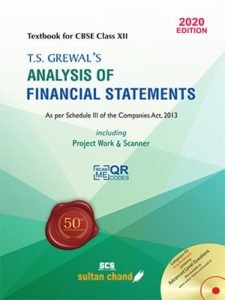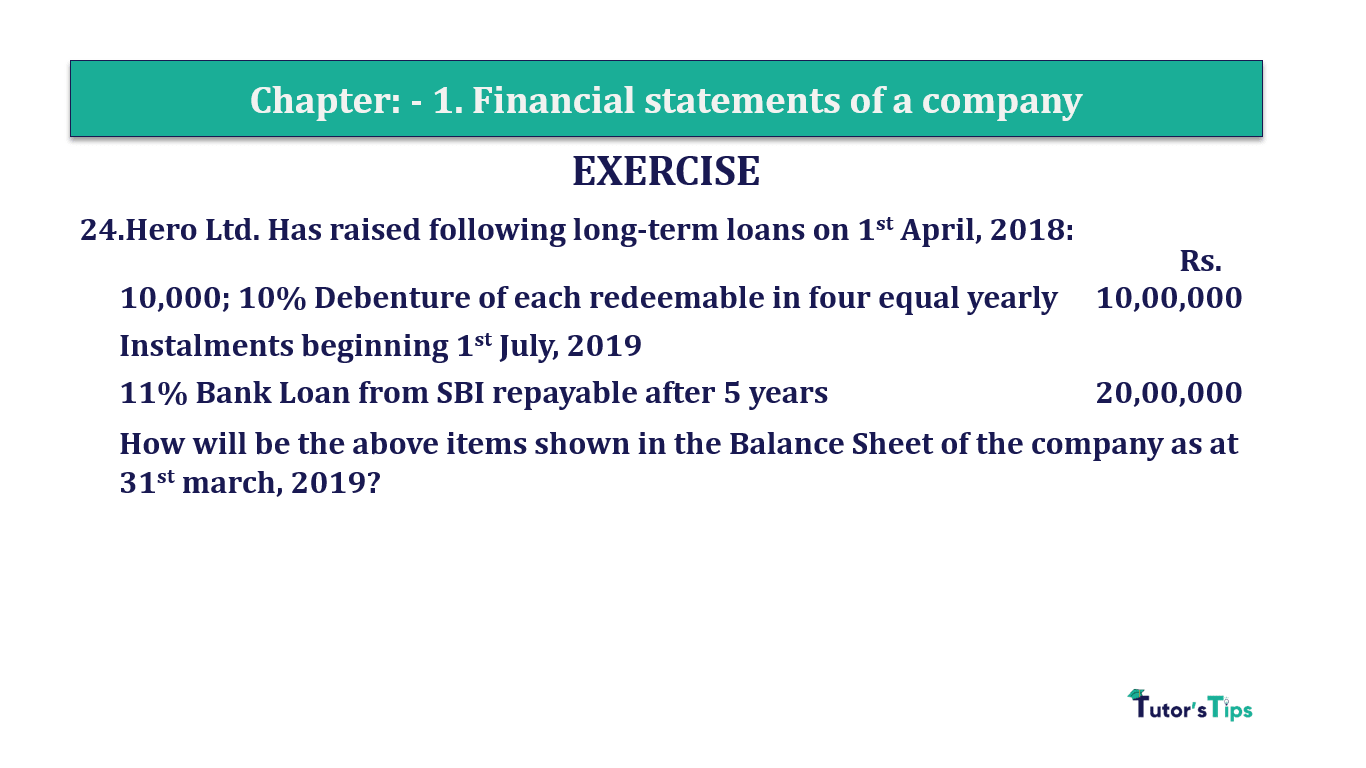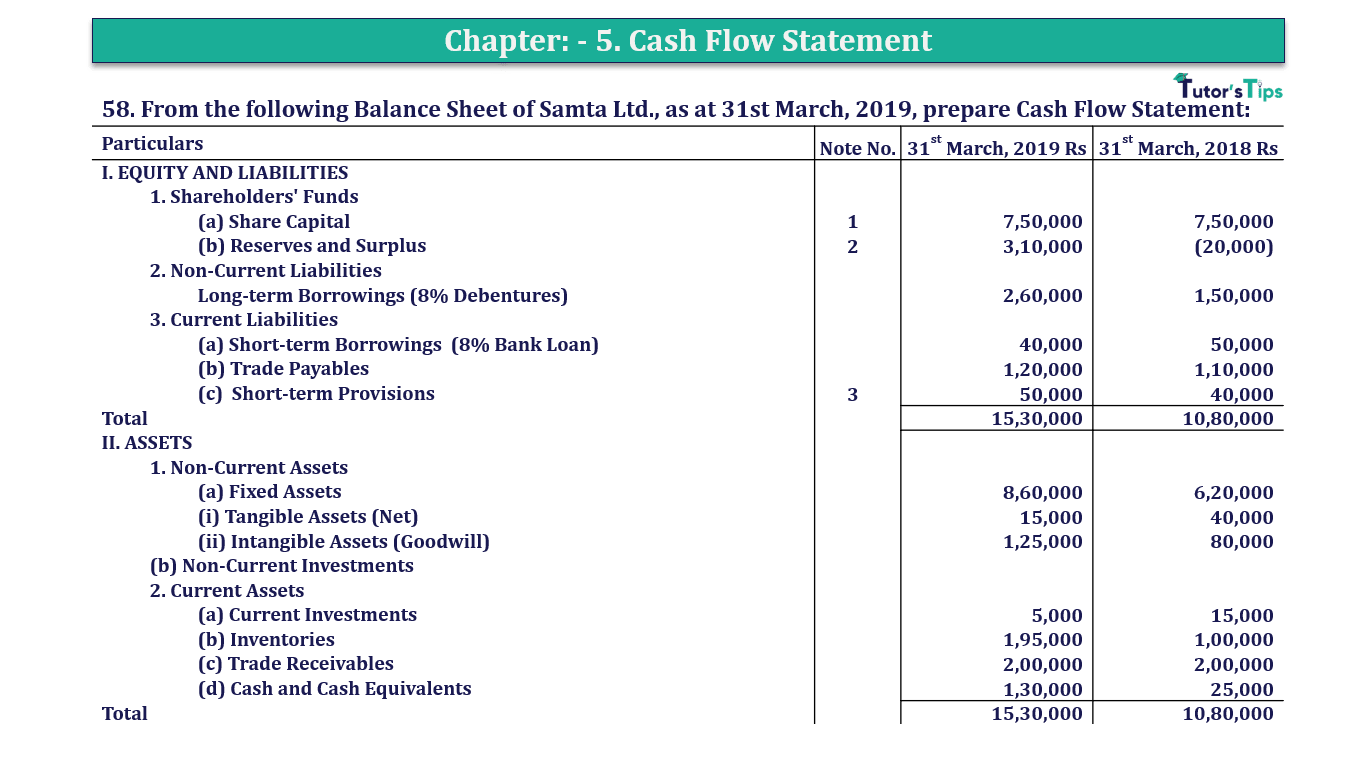Question 16 Chapter 1 of +2-B
Table of Contents
16. Under which of the heads will the following items be shown while
preparing Balance Sheet of a company, as per Schedule III of the
Companies Act; 2013:
| (i) Unamortised Loss on Issue of Debentures (to be written of after 12 months from the date of Balance Sheet); | ||
| (ii)10% Debentures; | (iii) Stock-in-Trade; | (iv) Cash at Bank; |
| (v) Bills Receivable; | (vi) Goodwill; | (vii) Loose Tools |
| (viii)Truck; | (ix) Provision for Tax; | (x) Sundry Creditors? |
The solution of Question 16 Chapter 1 of +2-B: –
|
Items |
Heads |
Sub. Heads |
| (i)Unamortised Loss on Issue of Debentures (to be written of after 12 months from the date of Balance Sheet) |
Non-Current Assets | Other Non-Current Assets |
| (ii)10% Debentures | Non-Current Liabilities | Long-term Borrowing |
| (iii) Stock-in-Trade | Current Assets | Inventories |
| (iv) Cash at Bank | Current Assets | Cash and Cash Equivalents |
| (v) Bills Receivable | Current Assets | Trade Receivable |
| (vi) Goodwill | Non-Current Assets | Fixed Assets: Intangible |
| (vii) Loose Tools | Current Assets | Inventories |
| (viii)Truck | Non-Current Assets | Fixed Assets: Tangible |
| (ix) Provision for Tax | Current Liabilities | Short-term Provisions |
| (x) Sundry Creditors | Current Liabilities | Trade Payable |
To understand more about Balance Sheet please check out following links:
Balance Sheet: Meaning, Format & Examples
Thanks, Please Like and share with your friends
Comment if you have any question.
Also, Check out the solved question of previous Chapters: –
T.S. Grewal’s Double Entry Book Keeping +2 (Vol. I: Accounting for Not-for-Profit Organizations and Partnership Firms)
- Chapter No. 1 – Financial Statement of Not-For-Profit Organisations
- Chapter No. 2 – Accounting for Partnership Firms – Fundamentals
- Chapter No. 3 – Goodwill: Nature and Valuation
- Chapter No. 4 – Change in Profit-Sharing Ratio Among the Existing Partners
- Chapter No. 5 – Admission of a Partner
- Chapter No. 6 – Retirement/Death of a Partner
- Chapter No. 7 – Dissolution of a Partnership Firm
T.S. Grewal’s Double Entry Book Keeping (Vol. II: Accounting for Companies)
- Chapter No. 8 – Company Accounts – Accounting for Share Capital
- Chapter No. 9 – Company Accounts – Issue of Debentures
- Chapter No. 10 – Redemption of Debentures
T.S. Grewal’s Double Entry Book Keeping (Vol. II: Accounting for Companies)
- Chapter No. 1 – Financial Statements of a Company
- Chapter No. 2 – Financial Statement Analysis
- Chapter No. 3 – Tools of Financial Statement Analysis – Comparative Statements and Common- Size Statements
- Chapter No. 4 – Accounting Ratios
- Chapter No. 5 – Cash Flow Statement
Check out T.S. Grewal +2 Book 2020@ Official Website of Sultan Chand Publication
Advertisement-X








Leave a Reply